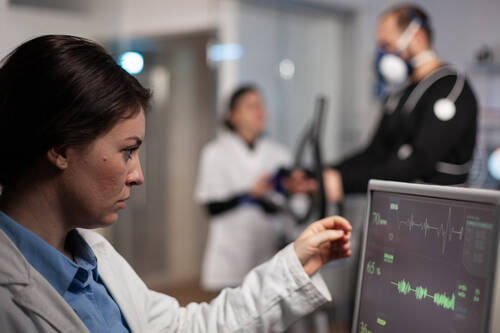
06 Nov Improving and Enhancing Healthcare Operations with Virtual Sitters
In recent years, virtual sitters have become a valuable addition to healthcare facilities, providing an innovative solution to improve patient safety, reduce operational costs, and optimize staff efficiency. These remote monitoring systems use technology to allow trained personnel to observe patients from a central location, intervening only when necessary. A virtual sitter can offer various benefits that can significantly enhance healthcare operations, supporting staff and promoting a safer patient environment.
Improving Patient Safety
Virtual sitters play a crucial role in enhancing patient safety by offering continuous monitoring of at-risk patients. Patients who are prone to falls, disorientation, or adverse reactions can be observed by virtual sitters, who use cameras and audio devices to keep an eye on them. These sitters can alert on-site staff if a patient attempts to leave their bed, tries to remove medical equipment, or shows signs of distress. By intervening in real time, virtual sitters reduce the likelihood of incidents that could harm the patient, leading to quicker responses and fewer injuries.
Reducing Costs and Resource Allocation
In a traditional setting, healthcare facilities often assign a staff member for one-on-one monitoring of patients at risk, such as those at high risk of falls. This practice requires significant staffing resources and leads to high labor costs. Virtual sitters enable remote observation of multiple patients simultaneously, meaning fewer personnel are required for direct monitoring. This reduction in direct one-on-one observation can significantly cut costs for the facility, freeing resources that can be allocated elsewhere.
For example, a single virtual sitter can monitor several rooms at once, allowing staff to focus on direct patient care rather than continuous observation. This shift not only reduces costs but also eases staffing challenges, particularly during times when healthcare facilities face a shortage of personnel.
Enhancing Staff Efficiency
Virtual sitters relieve the demand on staff by reducing the need for constant bedside monitoring. Instead, caregivers can focus on delivering higher-quality patient care, enhancing their job satisfaction and effectiveness. Nurses and other medical staff can dedicate more time to clinical tasks and care coordination, improving the quality of care for all patients.
Additionally, the virtual sitter system can log events and actions, providing an extra layer of documentation that can be reviewed if necessary. This documentation can aid in quality assurance, training, and ensuring compliance with healthcare regulations.
Promoting Infection Control and Safety
Virtual sitters also help reduce the risk of infection transmission, a significant concern in healthcare facilities, especially during flu season or public health crises like the COVID-19 pandemic. By minimizing the need for in-room observation, virtual sitters lower the frequency of close contact between staff and patients. This practice not only conserves personal protective equipment (PPE) but also contributes to a safer, more hygienic environment by reducing potential exposure to infectious agents.
Supporting Facility Growth and Scalability
As healthcare facilities grow, so does the need for efficient monitoring and patient safety measures. Virtual sitters offer a scalable solution that can expand with the facility’s needs. By centralizing patient observation, facilities can easily add more virtual sitters as patient numbers increase without having to undergo costly expansions or hire extensive new staff.
Conclusion
Incorporating virtual sitters into healthcare operations brings substantial benefits to facilities by improving patient safety, reducing costs, optimizing staff efficiency, enhancing infection control, and supporting scalable growth. As healthcare continues to evolve, virtual sitters stand out as a valuable tool to provide safer, more efficient care while reducing the burden on healthcare personnel. By leveraging this technology, healthcare facilities can create a more responsive, adaptable, and supportive environment for both patients and staff.
The information on MedicalResearch.com is provided for educational purposes only, and is in no way intended to diagnose, cure, or treat any medical or other condition.
Some links are sponsored. Products and services are not tested, warranted or endorsed.
Always seek the advice of your physician or other qualified health and ask your doctor any questions you may have regarding a medical condition. In addition to all other limitations and disclaimers in this agreement, service provider and its third party providers disclaim any liability or loss in connection with the content provided on this website.
Last Updated on November 25, 2024 by Marie Benz MD FAAD
